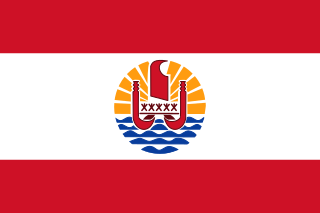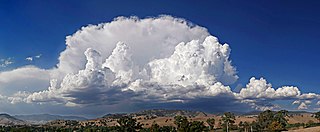
Hindu mythology are narratives found in Hindu texts such as the Vedic literature, epics like Mahabharata and Ramayana, the Puranas, the regional literatures like Periya Puranam. Hindu mythology is also found in widely translated popular texts such as the Panchatantra and Hitopadesha, as well as Southeast Asian texts.

Chinese mythology is mythology that has been passed down in oral form or recorded in literature in the geographic area now known as "China". Chinese mythology includes many varied myths from regional and cultural traditions. Chinese mythology is far from monolithic, not being an integrated system, even among just Han people. Chinese mythology is encountered in the traditions of various classes of people, geographic regions, historical periods including the present, and from various ethnic groups. China is the home of many mythological traditions, including that of Han Chinese and their Huaxia predecessors, as well as Tibetan mythology, Turkic mythology, Korean mythology, and many others. However, the study of Chinese mythology tends to focus upon material in Chinese language. Much of the mythology involves exciting stories full of fantastic people and beings, the use of magical powers, often taking place in an exotic mythological place or time. Like many mythologies, Chinese mythology has in the past been believed to be, at least in part, a factual recording of history. Along with Chinese folklore, Chinese mythology forms an important part of Chinese folk religion. Many stories regarding characters and events of the distant past have a double tradition: ones which present a more historicized or euhemerized version and ones which presents a more mythological version. Many myths involve the creation and cosmology of the universe and its deities and inhabitants. Some mythology involves creation myths, the origin of things, people and culture. Some involve the origin of the Chinese state. Some myths present a chronology of prehistoric times, many of these involve a culture hero who taught people how to build houses, or cook, or write, or was the ancestor of an ethnic group or dynastic family. Mythology is intimately related to ritual. Many myths are oral associations with ritual acts, such as dances, ceremonies, and sacrifices.

The indigenous peoples of the Americas comprise numerous different cultures. Each has its own mythologies. Some are quite distinct, but certain themes are shared across the cultural boundaries.

Classical Greco-Roman mythology, Greek and Roman mythology or Greco-Roman mythology is both the body of and the study of myths from the ancient Greeks and Romans as they are used or transformed by cultural reception. Along with philosophy and political thought, mythology represents one of the major survivals of classical antiquity throughout later Western culture. The Greek word mythos refers to the spoken word or speech, but it also denotes a tale, story or narrative.
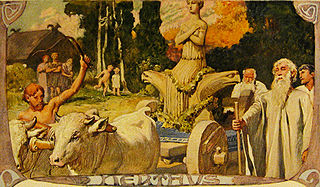
Germanic mythology consists of the body of myths native to the Germanic peoples. Commonly featuring narratives focused on Germanic deities and a large variety of other entities, Germanic mythology dates from the Proto-Germanic period and reaches beyond the Christianization of the Germanic peoples and into modern Germanic folklore. Germanic mythology includes Norse mythology, Anglo-Saxon mythology, and Continental Germanic mythology.
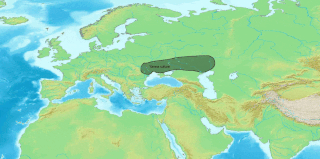
Proto-Indo-European mythology is the body of myths and stories associated with the Proto-Indo-Europeans. Although these stories are not directly attested, they have been reconstructed by scholars of comparative mythology based on the similarities in the belief systems of various Indo-European peoples.

Persian mythology are traditional tales and stories of ancient origin, all involving extraordinary or supernatural beings. Drawn from the legendary past of Iran, they reflect the attitudes of the society to which they first belonged - attitudes towards the confrontation of good and evil, the actions of the gods, yazats, and the exploits of heroes and fabulous creatures. Myths play a crucial part in Iranian culture and our understanding of them is increased when we consider them within the context of Iranian history.

Age of Mythology (AoM) is a real-time strategy video game developed by Ensemble Studios and published by Microsoft Game Studios. It was released on October 30, 2002 in North America and a week later in Europe.
Baltic mythology is the body of mythology of the Baltic people stemming from Baltic paganism and continuing after Christianization and into Baltic folklore. Baltic mythology ultimately stems from Proto-Indo-European mythology. The Baltic region was one of the last regions of Europe to be Christianized, a process that occurred from the 15th century and into at least a century after. While no native texts survive detailing the mythology of the Baltic peoples during the pagan period, knowledge of the mythology may be gained from Russian and German chronicles, later folklore, by way of etymology, and comparative mythology.

In mythology, and in the study of folklore and religion, a trickster is a character in a story, which exhibits a great degree of intellect or secret knowledge, and uses it to play tricks or otherwise disobey normal rules and conventional behaviour.
In philosophy, the concept of The Absolute, also known as The (Unconditioned) Ultimate, The Wholly Other, The Supreme Being, The Absolute/Ultimate Reality, and other names, is the thing, being, entity, power, force, reality, presence, law, principle, etc. that possesses maximal ontological status, existential ranking, existential greatness, or existentiality. In layman's terms, this is the one that is, in one way or another, the greatest, truest, or most real being.

Greek mythology is the body of myths originally told by the ancient Greeks. These stories concern the origin and the nature of the world, the lives and activities of deities, heroes, and mythological creatures, and the origins and significance of the ancient Greeks' own cult and ritual practices. Modern scholars study the myths in an attempt to shed light on the religious and political institutions of ancient Greece and its civilization, and to gain understanding of the nature of myth-making itself.

Norse mythology is the body of myths of the North Germanic peoples, stemming from Norse paganism and continuing after the Christianization of Scandinavia, and into the Scandinavian folklore of the modern period. The northernmost extension of Germanic mythology, Norse mythology consists of tales of various deities, beings, and heroes derived from numerous sources from both before and after the pagan period, including medieval manuscripts, archaeological representations, and folk tradition.
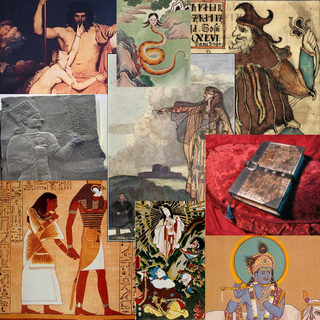
Myth is a folklore genre consisting of narratives that play a fundamental role in society, such as foundational tales. The main characters in myths are usually gods, demigods or supernatural humans. Myths are often endorsed by rulers and priests and are closely linked to religion or spirituality. In fact, many societies group their myths, legends and history together, considering myths to be true accounts of their remote past. Creation myths particularly, take place in a primordial age when the world had not achieved its later form. Other myths explain how a society's customs, institutions and taboos were established and sanctified. There is a complex relationship between recital of myths and enactment of rituals.

Celtic mythology is the mythology of Celtic polytheism, the religion of the Iron Age Celts. Like other Iron Age Europeans, the early Celts maintained a polytheistic mythology and religious structure. For Celts in close contact with Ancient Rome, such as the Gauls and Celtiberians, their mythology did not survive the Roman Empire, their subsequent conversion to Christianity and the loss of their Celtic languages. It is mostly through contemporary Roman and Christian sources that their mythology has been preserved. The Celtic peoples who maintained either political or linguistic identities left vestigial remnants of their ancestral mythologies that were put into written form during the Middle Ages.

